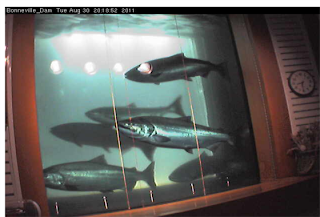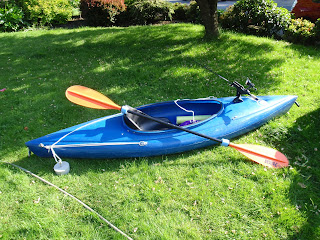Fishing from a kayak is different from almost any other type of watercraft. I have fished from boats, canoes, float tubes and pontoon boats. The one thing they have in common with most boats is that when you get a strike when trolling, you have momentum that helps set the hook and helps maintain a tight line through the fight and to the netting. The kayak is similar because as you paddle you have the same momentum as the other boats. However, when you get a strike, you stop paddling, lose the momentum and then, as you strip the line in, the boat is typically light enough to start turning towards the fish, thus increasing the chance for slack line. Adding more fun, are the piles of line that are being stripped in the boat increasing the chance that the line will catch on something if the fish takes a big run. Needless to say, there is a lot going on when you kayak fly fish. In later posts, I will offer more tips on how keep those lines tight.


